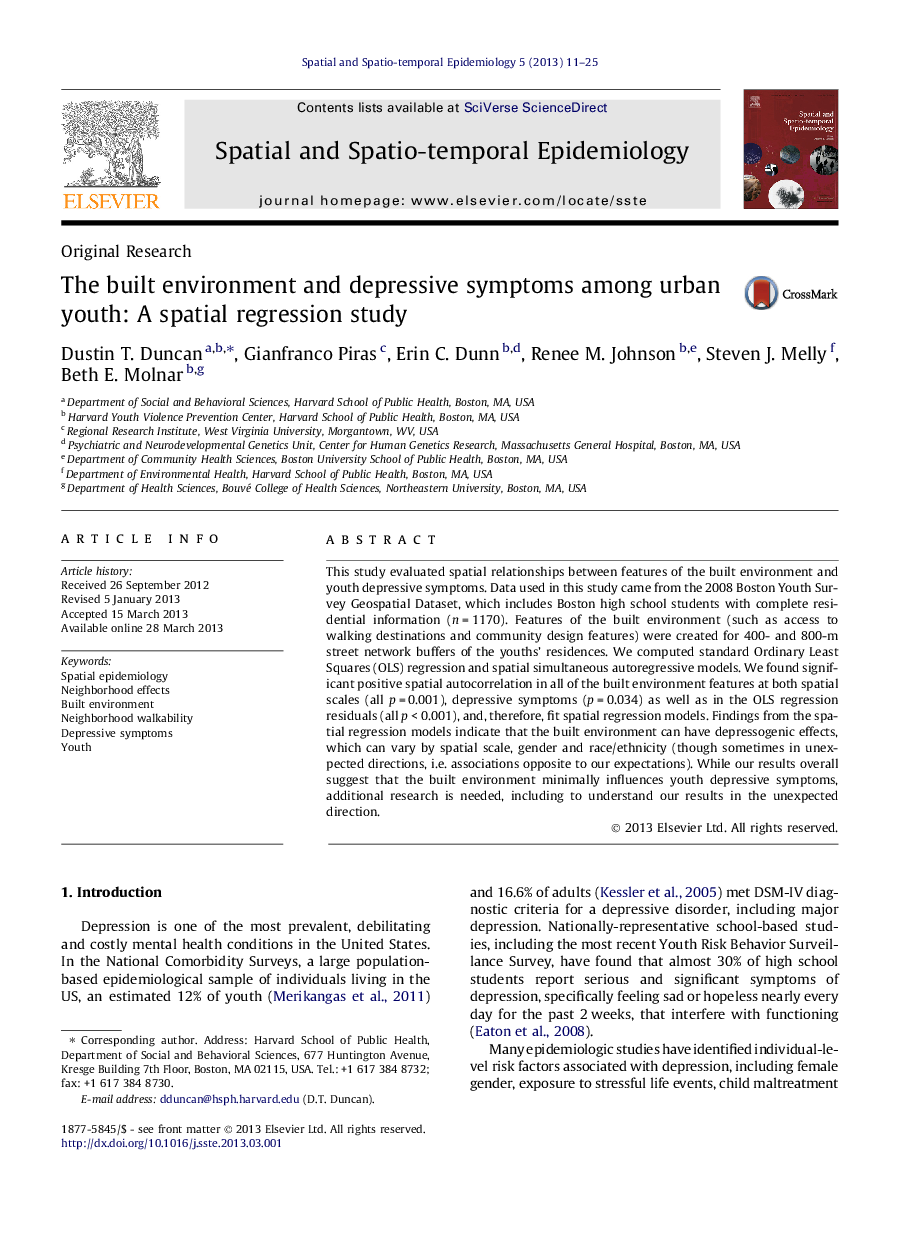| Article ID | Journal | Published Year | Pages | File Type |
|---|---|---|---|---|
| 1064382 | Spatial and Spatio-temporal Epidemiology | 2013 | 15 Pages |
•Significant positive spatial autocorrelation was found in depressive symptoms.•Significant positive spatial autocorrelation was found in the built environment.•Spatial regression models were necessary and improved model fit.•The built environment can have depressogenic effects among youth.•Overall, the built environment minimally influenced youth depressive symptoms.
This study evaluated spatial relationships between features of the built environment and youth depressive symptoms. Data used in this study came from the 2008 Boston Youth Survey Geospatial Dataset, which includes Boston high school students with complete residential information (n = 1170). Features of the built environment (such as access to walking destinations and community design features) were created for 400- and 800-m street network buffers of the youths’ residences. We computed standard Ordinary Least Squares (OLS) regression and spatial simultaneous autoregressive models. We found significant positive spatial autocorrelation in all of the built environment features at both spatial scales (all p = 0.001), depressive symptoms (p = 0.034) as well as in the OLS regression residuals (all p < 0.001), and, therefore, fit spatial regression models. Findings from the spatial regression models indicate that the built environment can have depressogenic effects, which can vary by spatial scale, gender and race/ethnicity (though sometimes in unexpected directions, i.e. associations opposite to our expectations). While our results overall suggest that the built environment minimally influences youth depressive symptoms, additional research is needed, including to understand our results in the unexpected direction.
